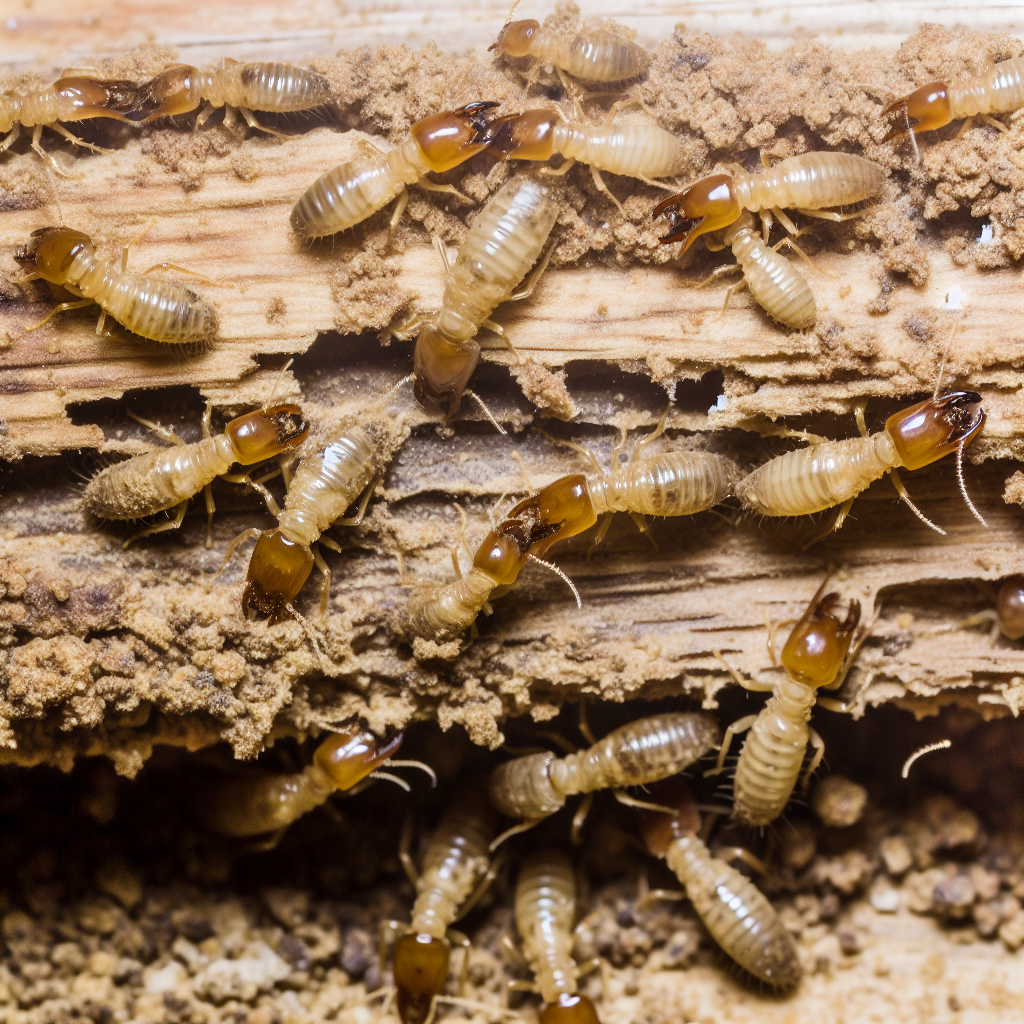
Termites are a homeowner’s worst nightmare, silently causing thousands of dollars in damage before you even know they’re there. Discover how to protect your most valuable asset with an effective termite control plan.
Understanding the Threat of Termites
Termites are more than just a nuisance; they are a serious threat to any residential property. These tiny insects feed on wood and can cause significant structural damage before you even realize they are there. Termites are responsible for billions of dollars in property damage annually in the United States alone. Their ability to remain hidden while causing extensive damage makes them especially dangerous to homeowners.
Understanding the life cycle and behavior of termites is crucial for effective termite control. Termites live in colonies and work around the clock to feed and expand their nests. The three primary types of termites you may encounter are subterranean, drywood, and dampwood termites, each with distinct habits and damage patterns. Knowing which type of termite is affecting your home is the first step in creating a targeted and effective termite control plan.
Signs of a Termite Infestation You Should Never Ignore
Early detection of a termite infestation can save you thousands of dollars in repair costs. Some common signs of a termite infestation include mud tubes on exterior walls, hollow-sounding wood, discarded wings near windows or doors, and frass (termite droppings). These indicators suggest that termites are actively feeding and nesting in your home.
It's essential to carry out regular inspections around your property to catch these signs early. Pay particular attention to damp or decaying wood, as these are prime targets for termites. If you notice any of these signs, it's crucial to act quickly and contact a professional termite control service to assess the situation and recommend appropriate measures.
The Importance of Professional Termite Control Services
While there are many DIY termite treatments available, they often fall short of providing complete and long-term eradication of termites. Professional termite control services offer a comprehensive approach to dealing with infestations. Experts use advanced tools and techniques to accurately identify the extent of the infestation and apply targeted treatments that effectively eliminate termites from your home.
Professional termite control services not only address the current infestation but also implement preventative measures to protect your home from future invasions. These services include regular inspections, soil treatments, and the installation of physical barriers. Investing in professional termite control services can save you from the extensive damage and high repair costs associated with termite infestations.
DIY vs. Professional Termite Control: What You Need to Know
DIY termite treatments may seem like a cost-effective solution initially, but they often lack the efficacy needed for complete eradication. Over-the-counter treatments typically address only surface-level infestations and fail to reach the core of the termite colony. This can result in recurring infestations and ongoing damage to your home.
On the other hand, professional termite control services offer a more reliable and thorough solution. Professionals have the knowledge, experience, and equipment to accurately diagnose and treat termite infestations. They can also provide ongoing monitoring and maintenance to ensure your home remains termite-free. While professional services may come at a higher upfront cost, the long-term benefits and peace of mind they provide are well worth the investment.
Preventative Measures to Keep Your Home Termite-Free
Prevention is always better than cure, and this is especially true when it comes to termites. Taking proactive steps can significantly reduce the risk of a termite infestation. Start by eliminating any sources of excess moisture around your home, as termites are attracted to damp environments. Ensure proper drainage around your property and fix any leaks in your plumbing or roofing.
Regularly inspect and maintain wooden structures in and around your home. Use termite-resistant materials for construction and apply termite treatments to vulnerable areas. Keep firewood and other wooden materials away from your home's foundation, and trim back any vegetation that comes into direct contact with your house. By implementing these preventative measures, you can create an environment that is less appealing to termites and protect your home from potential infestations.
